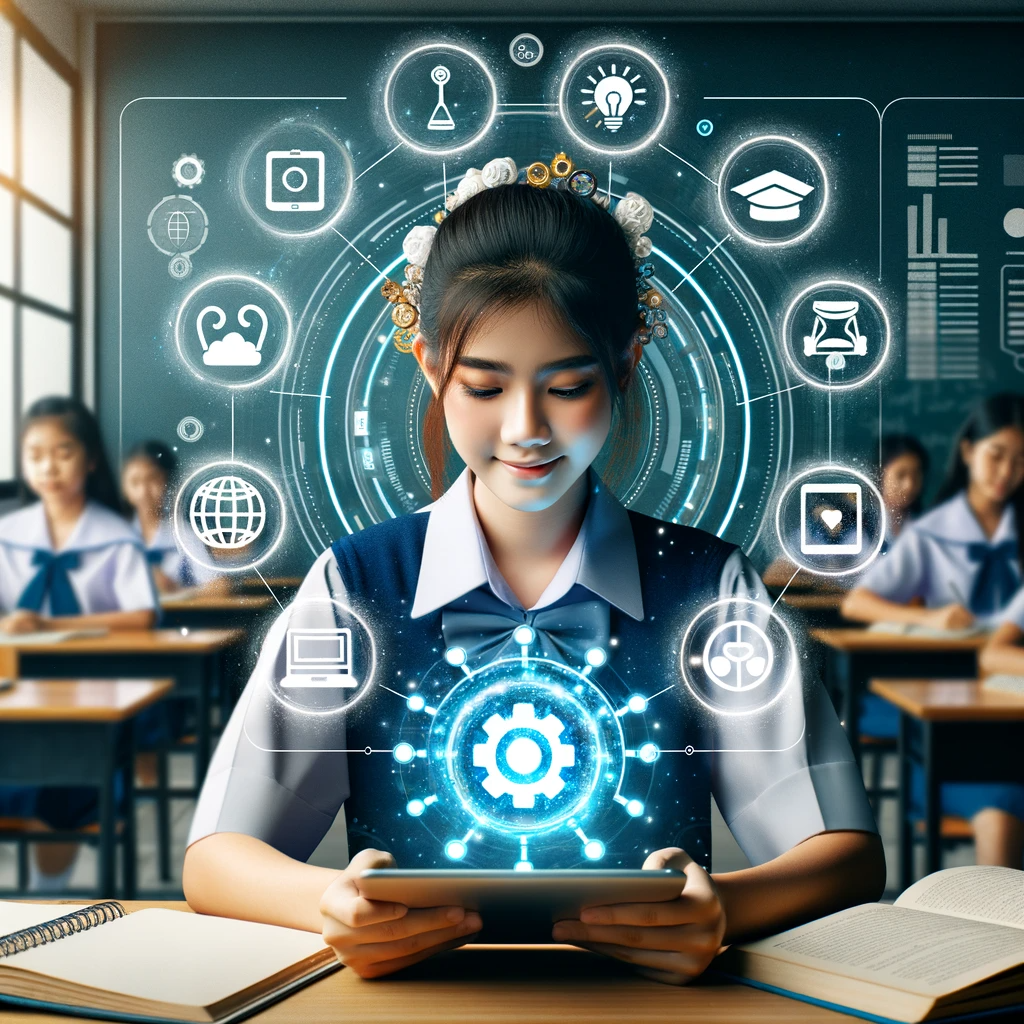
Introduction to the impact of technology on education
The landscape of education is undergoing a seismic shift. As technology continues to evolve at a lightning pace, it’s reshaping how we learn and teach, making the classroom experience more dynamic than ever before. Gone are the days when traditional methods reigned supreme; now, digital tools are paving new paths for students and educators alike. Imagine virtual classrooms that connect learners from all corners of the globe or AI-driven software tailoring lessons to individual needs. The future of education is not just an idea—it’s happening right now, revolutionizing every aspect of learning in ways we once only dreamed possible. Let’s dive into this exciting transformation and explore how technology is redefining our educational experiences today and tomorrow.

Advancements in online learning and virtual classrooms
The landscape of education is changing rapidly, thanks to online learning and virtual classrooms. Students now have access to a wealth of resources at their fingertips. No longer confined to traditional classroom walls, they can learn from anywhere in the world.
Interactive platforms are making lessons more engaging. Features like discussion boards, live chats, and multimedia presentations foster collaboration among students. These tools break down geographical barriers and bring diverse perspectives into every lesson.
Moreover, flexibility is a game-changer for many learners. Busy schedules no longer hinder education as students can choose when and how they study. This adaptability enhances motivation and commitment.
Teachers are also embracing these advancements. They utilize technology to create dynamic curricula that cater to different learning styles. Through innovative assessments and feedback mechanisms, educators ensure that every student receives personalized attention in this digital era.
Personalized learning through AI and adaptive software
Personalized learning is reshaping education. With the help of AI and adaptive software, students can enjoy tailored experiences that cater to their unique needs.
Imagine a classroom where every learner progresses at their own pace. Algorithms analyze strengths and weaknesses, creating customized lesson plans. This dynamic approach keeps students engaged and motivated.
Adaptive software offers instant feedback. Learners receive insights on performance right away, allowing them to understand concepts better. Teachers can focus on individuals who need extra support while empowering others to excel independently.
AI-driven tools also encourage exploration beyond standard curricula. Students dive deeper into subjects they are passionate about, fostering curiosity and critical thinking skills essential for the future.
This technology not only enhances knowledge retention but cultivates a love for learning itself. Empowered by personalized pathways, learners become active participants in their educational journeys.
The use of virtual and augmented reality in education
Virtual and augmented reality are transforming the way students engage with learning materials. These technologies create immersive environments that bring subjects to life in ways never seen before.
Imagine stepping into a virtual ancient civilization during a history lesson. Students can explore landmarks, interact with historical figures, and experience events firsthand. This level of engagement makes learning memorable.
Augmented reality enhances traditional textbooks by overlaying digital information onto physical pages. With a simple scan, complex concepts become interactive experiences right in front of students’ eyes.
These tools also cater to diverse learning styles. Visual learners can benefit from vivid graphics while kinesthetic learners enjoy hands-on simulations.
As educators experiment with these innovative methods, the classroom becomes a dynamic space for exploration rather than just passive listening. The potential for deeper understanding is exciting as technology continues to evolve within education contexts.
Benefits and challenges of technology in the classroom
Technology in the classroom brings an array of benefits. For starters, it enhances accessibility to resources. Students can tap into a wealth of information online, expanding their learning beyond textbooks.
Collaboration becomes seamless with digital tools. Students can work together on projects from different locations, fostering teamwork and communication skills.
However, challenges exist alongside these advantages. Not all students have equal access to devices or reliable internet connections. This digital divide can create disparities in learning experiences.
Distractions are another concern. With social media and gaming just a click away, maintaining focus during lessons may become difficult for some students.
Teachers also face hurdles when integrating technology effectively into their curricula. They must continuously update their skills and adapt lesson plans to keep pace with rapid advancements in educational tech.
How teachers are adapting to incorporate technology into their teaching methods
Teachers are embracing technology in innovative ways. They’re not just using projectors and smartboards anymore; they’re integrating apps, online resources, and interactive platforms into their daily lessons.
Professional development opportunities are essential. Educators attend workshops to learn about new tools and strategies. This continuous learning helps them stay ahead of the curve.
Collaboration plays a key role too. Teachers share ideas through social media groups or online forums. This exchange of knowledge fosters creativity in lesson planning.
Classroom management has also evolved with tech integration. Tools for tracking student progress streamline assessment processes, allowing teachers to focus more on individual needs.
Many educators encourage student engagement through gamified learning experiences. By making education fun and interactive, they cultivate a positive environment that enhances understanding and retention.
The future possibilities of technology in education
The future of education is bursting with potential. Imagine classrooms where students learn at their own pace, guided by intelligent algorithms that adapt to their needs.
Artificial intelligence could analyze performance in real-time, providing instant feedback and support tailored specifically for each learner. This personalized touch can fuel engagement and understanding.
Moreover, blockchain technology may streamline administrative tasks, ensuring transparency in records while safeguarding student data.
Collaboration across borders might become commonplace through advanced virtual reality platforms. Students could explore historical sites or conduct science experiments together from different corners of the globe.
As technology evolves, so will educational methodologies. The possibilities are limited only by our imagination as we embrace new tools designed to enhance learning experiences far beyond traditional boundaries.
Conclusion: Embracing the digital transformation in education for a better tomorrow
The digital transformation in education is not just a trend; it’s a profound shift that holds immense potential for both teachers and students. Technology is reshaping the landscape of learning, making it more engaging, accessible, and tailored to individual needs.
As we move forward, embracing these advancements will be crucial. Schools and educators need to adapt their methods while encouraging collaboration between technology and traditional teaching techniques. By doing so, they can create an environment where every student has the opportunity to thrive.
By harnessing the power of technology in the classroom, we pave the way for innovative teaching strategies that foster critical thinking and creativity among learners. This journey towards a tech-driven educational future promises greater inclusivity and engagement.
By welcoming this change with open arms, we can build a brighter tomorrow for our students—one where education knows no bounds thanks to the revolutionary impact of technology.




Leave a Reply